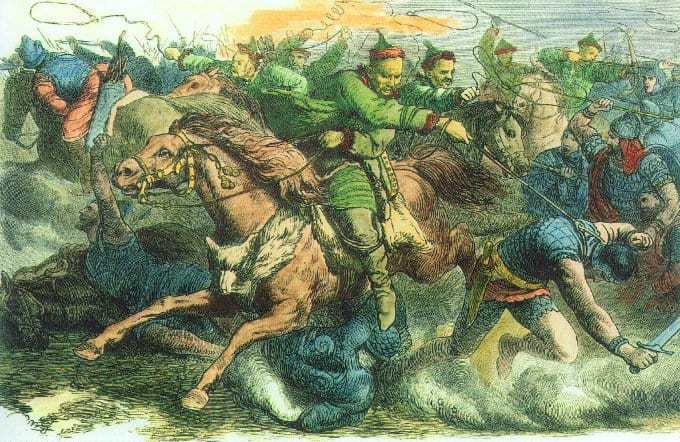The Huns were a nomadic tribe that were first mentioned in Roman texts around 91 CE. At the time, they were no threat to the Romans but that changed 200 years later when the Huns had developed a reputation for being a particularly brutal barbarian tribe. They rose to their height under Attila the Hun (434 CE to 453 CE) and became the most powerful and feared military force in all of Europe. By Attila’s death in 453 CE the Huns had built a large empire. However, Attila’s sons were left in control of the empire and their battle for supremacy tore it apart by 469 CE.
Here are just a few things that you might not know about the Huns.
No One Knows Where They Came From

There are numerous theories about the origin of the Huns. Since the 18th century one of the prominent theories is that the Huns were one in the same with the Xiongnu people. The Xiongnu were a mysterious nomadic tribe that terrorized the northern border of China during the Han Dynasty (202 BCE to 220 CE). The reason for the belief is that the Xiongnu were nomadic like the Huns, they fought mounted just like the Huns and they were particularly skilled at bow and arrow. That is where the similarities end. There has never been any definitive evidence found that links the two peoples together. Many historians reject the idea of a Xiongnu/Hun link because there is so little evidence to support it. The Xiongnu had a distinct art form that featured stunning animal motifs, an art form that has never been found on any of the Hun artifacts. Both tribes did use bonze cauldrons and some early writing suggests they may have come from China but the majority of ancient writing on the Huns suggests a more sinister origin. It was the consensus of the period that the Huns were born of demons or witches who lived deep in the wilderness.
Another theory about the origin of the Huns suggests they came from the area that is now modern Kasakhstan. Historically the area was controlled by nomadic tribes and the Huns did control the steppes of Kasahkstan up until the fall of the empire. Most historians seem to agree that whatever the core origin of the Huns was, the tribe that we refer to as the Huns was likely a “super -tribe.” That is, a tribe that was a conglomerate of nomadic tribes from throughout Europe and even Asia which would explain the variety of different influences found in Hun ruins and artifacts.

